
Following the 2nd-generation Nest Hub, the next major new product from Made by Google is the Pixel Buds A-Series. As the name implies, Google is offering a more affordable pair of truly wireless earbuds that build on the company’s success with mid-tier phones.
A lot about the A-Series is identical to what Google released in April of 2020 with the 2nd-generation Pixel Buds. The design is entirely the same with a domed touch-sensitive surface that accepts taps (single/double/triple) and a long-press for Assistant with both buds capable of accepting gestures.
However, you lose the ability to swipe for volume control and must use voice commands (Hey Google, turn up the volume). This was a cost-cutting measure for Google and means there’s great emphasis on Adaptive Sound for automatic volume adjustment based on your current environment. It gets temporarily disabled when you manually make adjustments and kicks back on when conditions change. Bass Boost is also available to provide more power to low tones.
Inside, there are custom-designed 12mm dynamic speaker drivers — like on last year’s model — and two beam-forming microphones, while the same “three point anchor system” to keep the Pixel Buds A-Series in your ear is retained. There’s a soft-rubber stabilizer arc, retention curve that matches the ear’s bottom valley, and soft-fit eartips (three sizes are included). Google has also kept the spatial vent to allow in ambient noise and prevent the “plugged-ear feeling.”
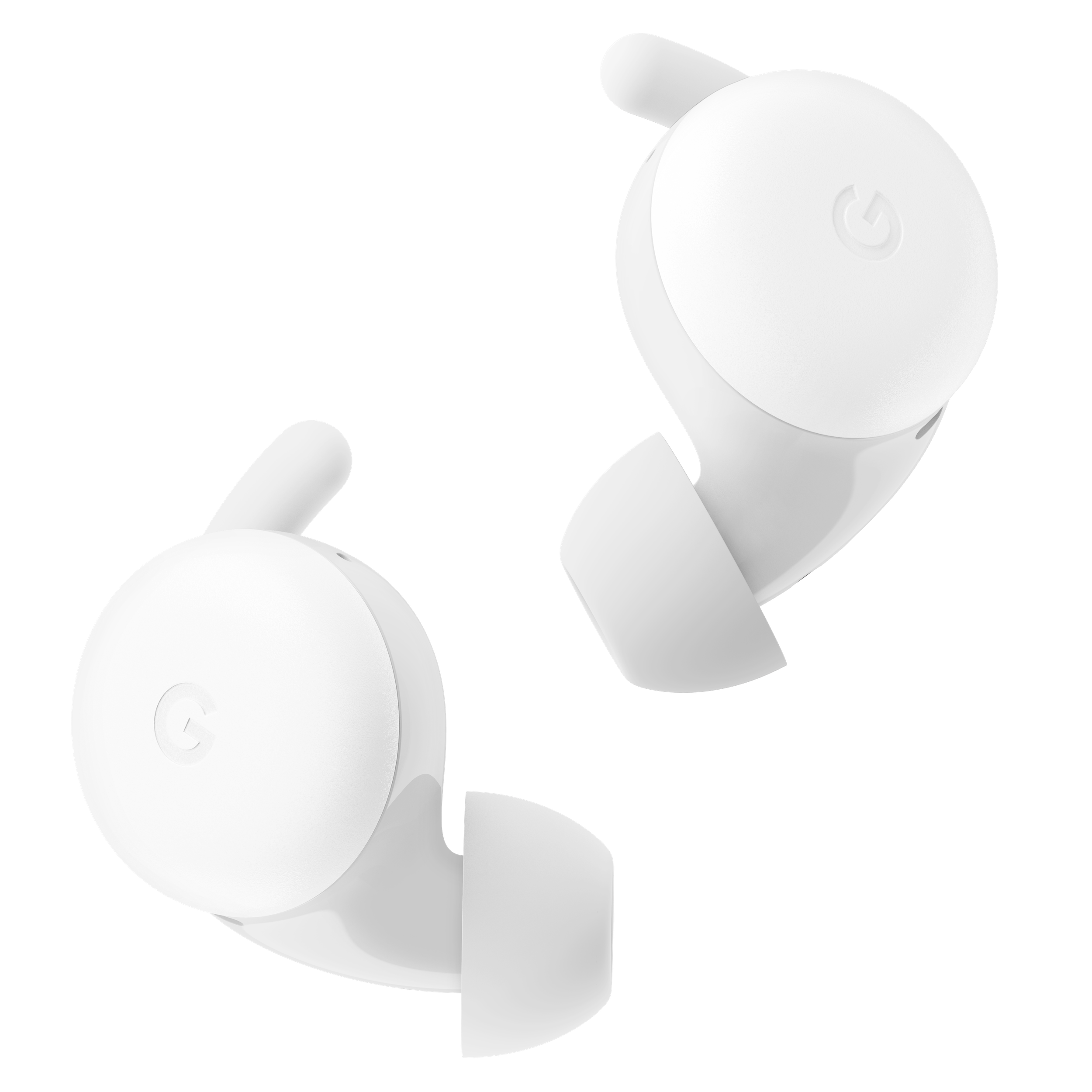
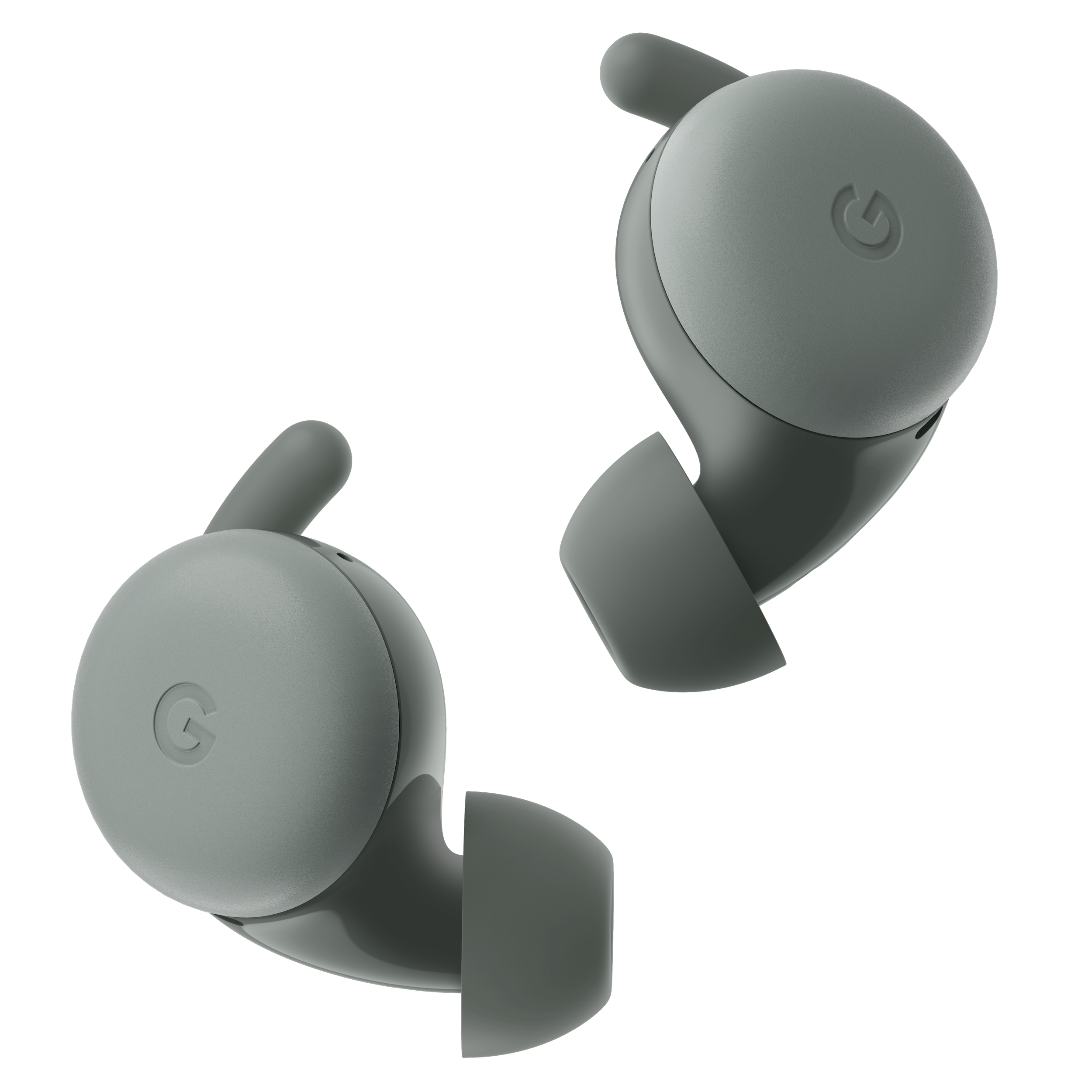
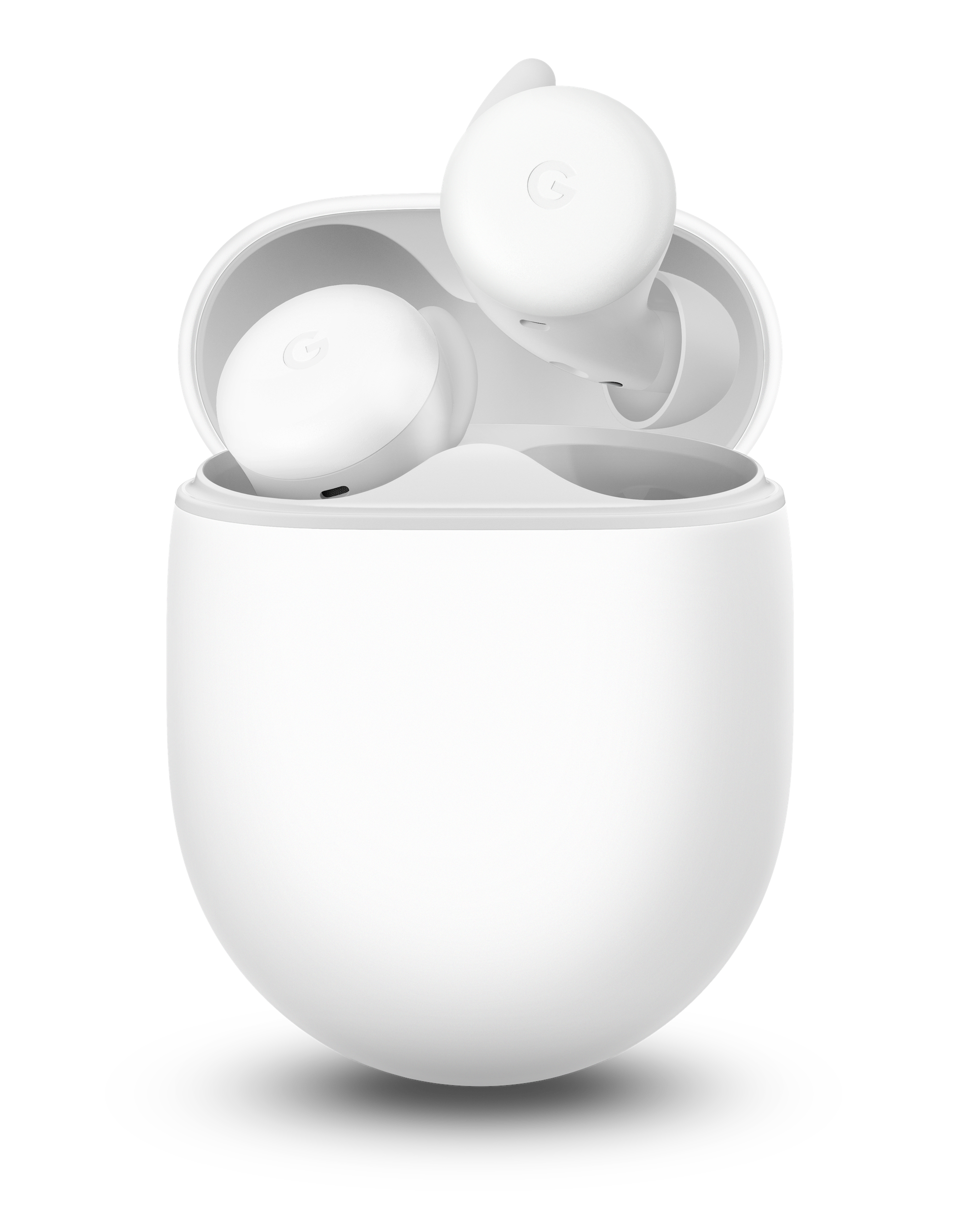
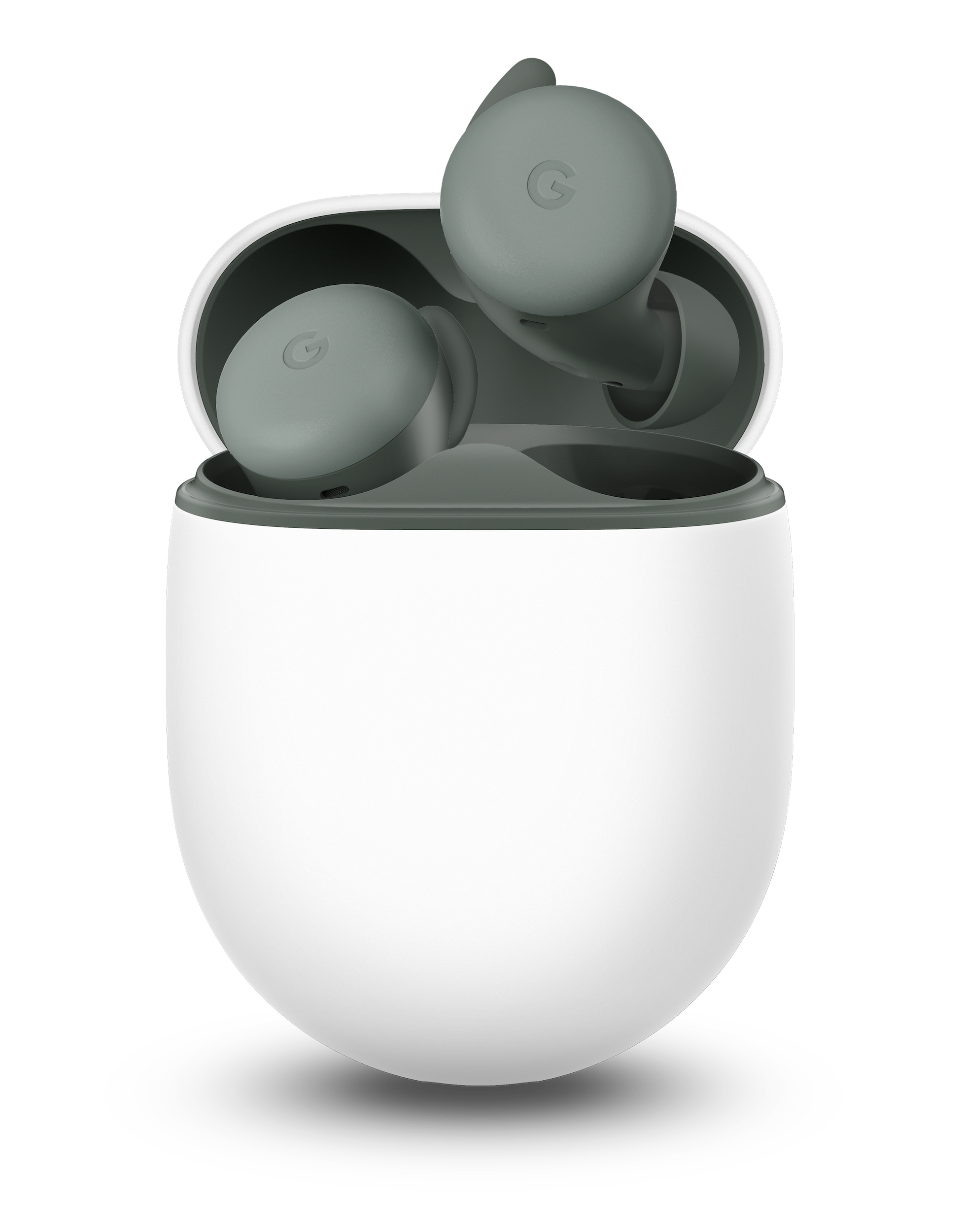
They can again be worn during exercise thanks to IPX4 sweat and water resistance and will automatically pause when pulled out or play when plugged in thanks to in-ear detection via IR proximity sensors.
Pixel Buds A-Series battery life is still rated at five hours of listening time (2.5 hours of talk) per bud, while you get 24 hours with the charging case. A 15-minute charge provides three hours of playback, but there is no wireless charging, only USB-C power.
Meanwhile, the most obvious visible difference is coloring. The part that rests in your ear/underside is no longer black across all hues. Rather, it matches the dome color and is glossy, though in a slightly darker shade. There’s the standard “Clearly White” and a delightful “Dark Olive” with both colors also extending to the insides of the charging case. The interior of this pebble-shaped holder also features some glossiness, while there’s no longer an internal LED indicator, just a single external one just below the lid.

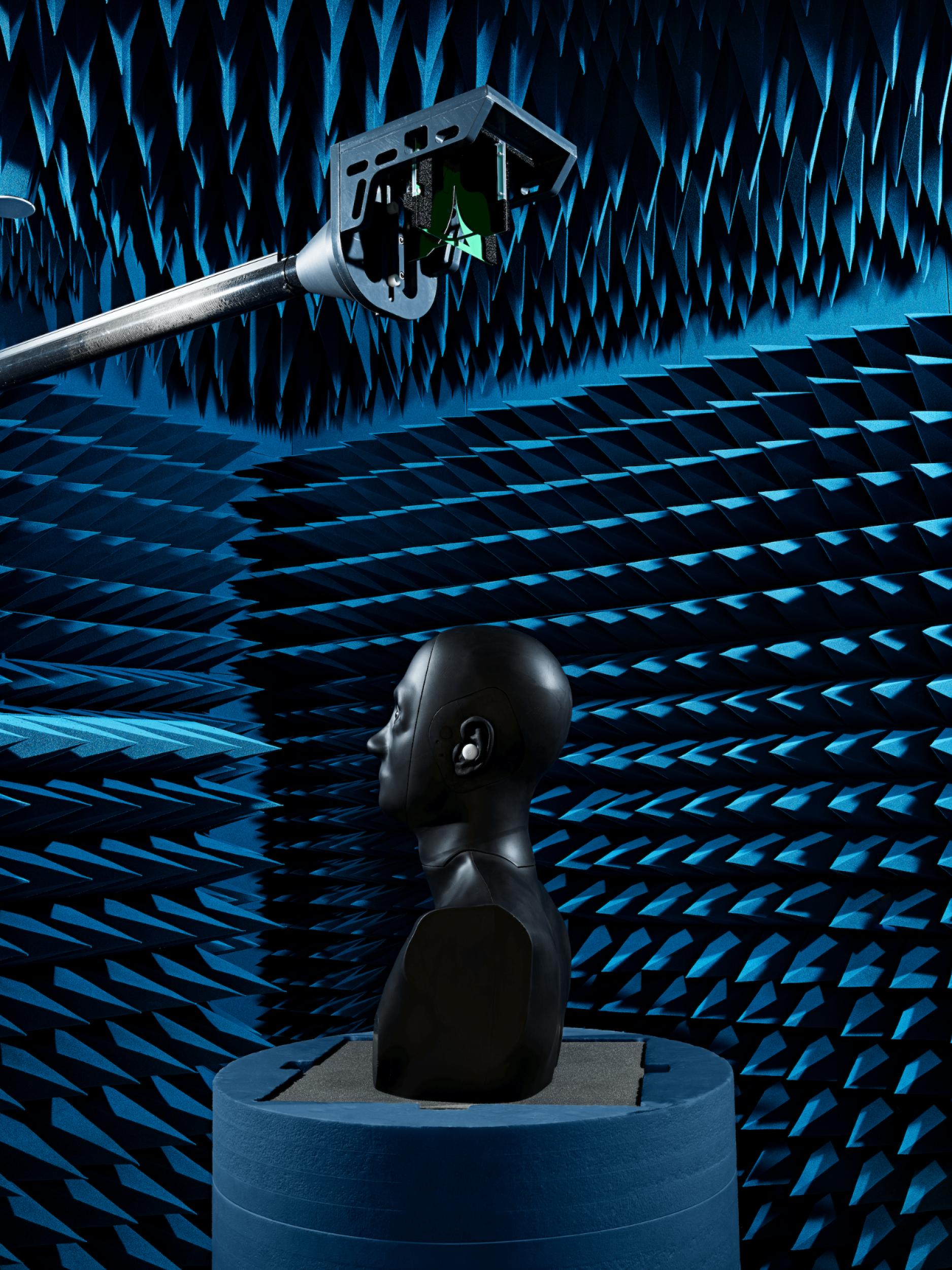
The biggest internal upgrade is a new chipset that sees each earbud connect to your phone directly rather than having one bud connect to the source device and then relay a signal to the other. That updated hardware also delivers stronger transmission power for improved connectivity and reduced latency. This should address audio cutouts that some users experienced with the 2nd-generation.
Another change is how these more affordable Pixel Buds lack AI-powered Attention Alerts that automatically lowers what’s playing and chimes when there’s crying, barking, or emergency sirens in the background. The ability to share buds with individual volume control is also gone as there’s no motion-detecting accelerometer or gyroscope. Otherwise, software features like Google Assistant and Translate are available.
Google is still selling last year’s model at $179. For $80 more, you get more colors, the genuinely convenient swipe volume gestures, and wireless charging for integration with the Pixel 5’s Battery Share.
Pixel Buds A-Series are available for pre-order today at $99 in the US and Canada. It will hit store shelves in those two countries on June 17.


Author: Abner Li
Source: 9TO5Google



